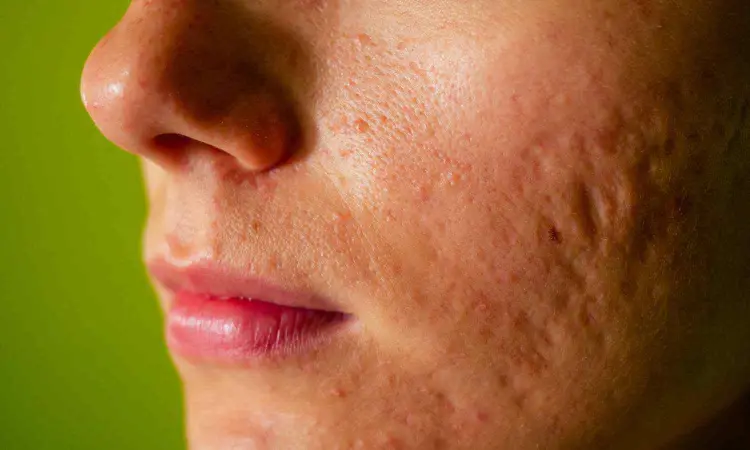- Home
- Medical news & Guidelines
- Anesthesiology
- Cardiology and CTVS
- Critical Care
- Dentistry
- Dermatology
- Diabetes and Endocrinology
- ENT
- Gastroenterology
- Medicine
- Nephrology
- Neurology
- Obstretics-Gynaecology
- Oncology
- Ophthalmology
- Orthopaedics
- Pediatrics-Neonatology
- Psychiatry
- Pulmonology
- Radiology
- Surgery
- Urology
- Laboratory Medicine
- Diet
- Nursing
- Paramedical
- Physiotherapy
- Health news
- Fact Check
- Bone Health Fact Check
- Brain Health Fact Check
- Cancer Related Fact Check
- Child Care Fact Check
- Dental and oral health fact check
- Diabetes and metabolic health fact check
- Diet and Nutrition Fact Check
- Eye and ENT Care Fact Check
- Fitness fact check
- Gut health fact check
- Heart health fact check
- Kidney health fact check
- Medical education fact check
- Men's health fact check
- Respiratory fact check
- Skin and hair care fact check
- Vaccine and Immunization fact check
- Women's health fact check
- AYUSH
- State News
- Andaman and Nicobar Islands
- Andhra Pradesh
- Arunachal Pradesh
- Assam
- Bihar
- Chandigarh
- Chattisgarh
- Dadra and Nagar Haveli
- Daman and Diu
- Delhi
- Goa
- Gujarat
- Haryana
- Himachal Pradesh
- Jammu & Kashmir
- Jharkhand
- Karnataka
- Kerala
- Ladakh
- Lakshadweep
- Madhya Pradesh
- Maharashtra
- Manipur
- Meghalaya
- Mizoram
- Nagaland
- Odisha
- Puducherry
- Punjab
- Rajasthan
- Sikkim
- Tamil Nadu
- Telangana
- Tripura
- Uttar Pradesh
- Uttrakhand
- West Bengal
- Medical Education
- Industry
Low-level laser therapy effectively improve skin elasticity and wrinkles, claims study

Skin aging and photoaging can manifest at a relatively early age which pose significant aesthetic challenges. The common signs of skin aging include wrinkles, dyspigmentation and decreased elasticity. A recent study published in the Journal of Cosmetic Dermatology explores the effectiveness and safety of low-level laser therapy (LLLT) for skin rejuvenation by presenting a potential breakthrough in cosmetic dermatology.
The study involved 30 Syrian female patients aged between 25 and 50. These patients were diagnosed with moderate to severe melasma and wrinkles. They were divided into two groups where each participant received LLLT with a wavelength of 660 nm by emitting a continuous wave. The power density and dose applied were 15.6 mW/cm² and 3 J/cm², respectively, over an effective laser area of 32 cm². The evaluations were conducted before, during and after 12 treatment sessions by utilizing photographs and several diagnostic tools, including the modified Melasma Area Severity Index (MASI), the Pinch test and Fitzpatrick's classification of facial wrinkling at baseline. The primary objective of this study evaluated the effectiveness and safety of LLLT for skin rejuvenation in women suffering from moderate to severe melasma and wrinkles.
The findings of this study were strong by indicating significant improvement in skin rejuvenation post-treatment, with statistical significance (p < 0.05). The patients reported marked improvements in the skin elasticity and wrinkle reduction. Additional outcome measures, like the patient satisfaction scores, reflected high levels of satisfaction with the treatment. Also, no adverse effects or re-pigmentation were observed during the study.
The study concluded that LLLT is a safe therapeutic option for treating melasma by enhancing skin elasticity and reducing wrinkles. These findings support the integration of LLLT into cosmetic and dermatological treatment and follow-up programs. The non-invasive nature of LLLT when combined with its effectiveness positions it as a valuable tool in the ongoing battle against skin aging.
These outcomes point towards the significant improvements observed in skin texture and appearance illuminate the potential of LLLT as a rooted option in cosmetic treatments, this could revolutionize current approaches to skin rejuvenation. The absence of adverse effects further highlights its safety and could make it a crucial option for long-term use. Overall, further studies could expand on different demographics and varying degrees of skin conditions. Long-term studies could also provide insights into the sustainability of LLLT benefits over time. Thereby, integrating LLLT with other skin care treatments could improve its efficacy for comprehensive skin rejuvenation protocols.
Source:
Shurrab, K., & Alzghayar, J. N. (2024). Low‐level laser therapy for skin rejuvenation: A safe and effective solution baked by data and visual evidence. In Journal of Cosmetic Dermatology. Wiley. https://doi.org/10.1111/jocd.16404
Neuroscience Masters graduate
Jacinthlyn Sylvia, a Neuroscience Master's graduate from Chennai has worked extensively in deciphering the neurobiology of cognition and motor control in aging. She also has spread-out exposure to Neurosurgery from her Bachelor’s. She is currently involved in active Neuro-Oncology research. She is an upcoming neuroscientist with a fiery passion for writing. Her news cover at Medical Dialogues feature recent discoveries and updates from the healthcare and biomedical research fields. She can be reached at editorial@medicaldialogues.in
Dr Kamal Kant Kohli-MBBS, DTCD- a chest specialist with more than 30 years of practice and a flair for writing clinical articles, Dr Kamal Kant Kohli joined Medical Dialogues as a Chief Editor of Medical News. Besides writing articles, as an editor, he proofreads and verifies all the medical content published on Medical Dialogues including those coming from journals, studies,medical conferences,guidelines etc. Email: drkohli@medicaldialogues.in. Contact no. 011-43720751


